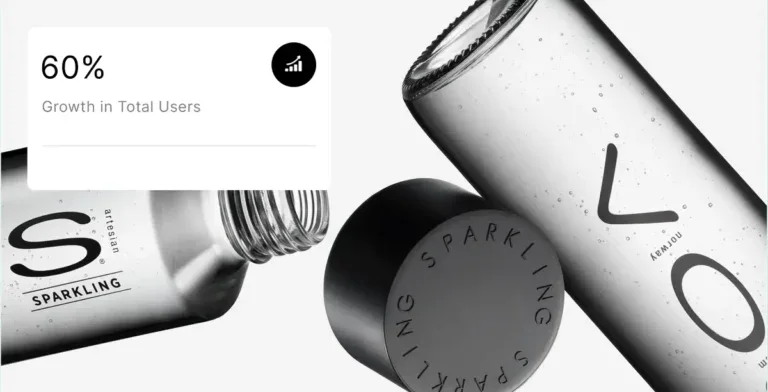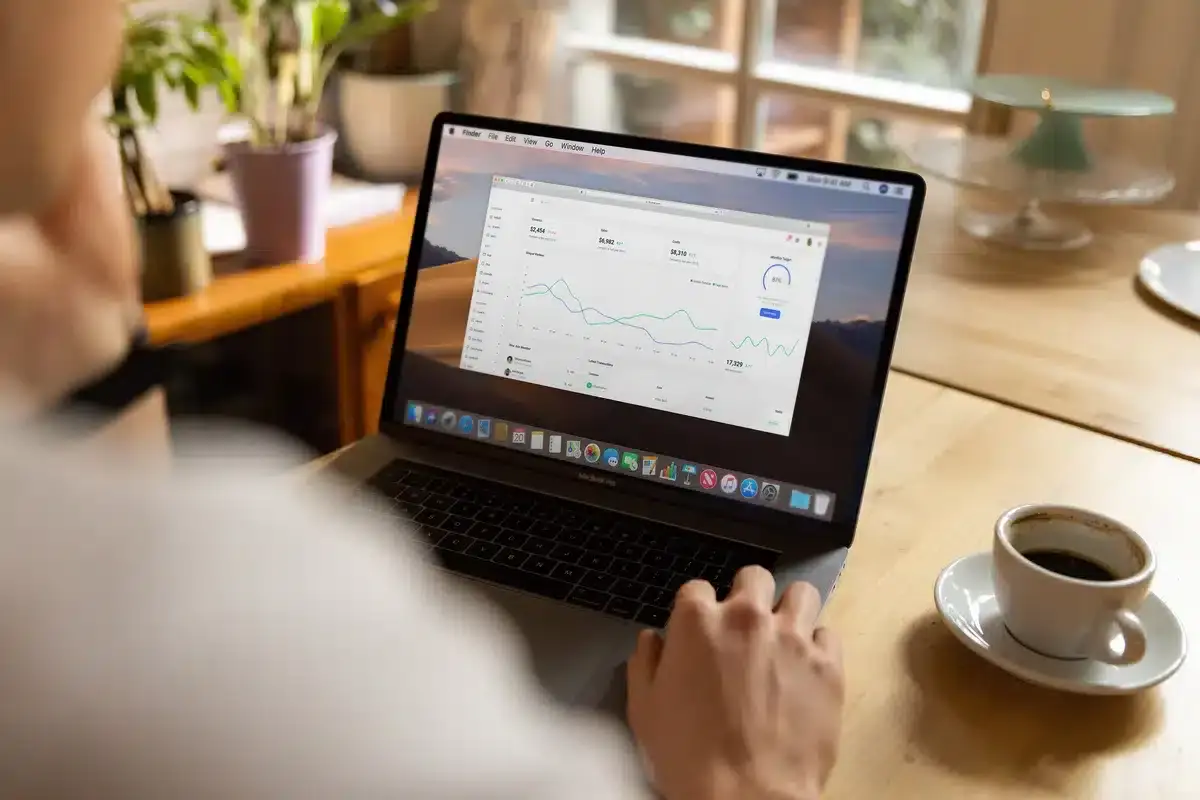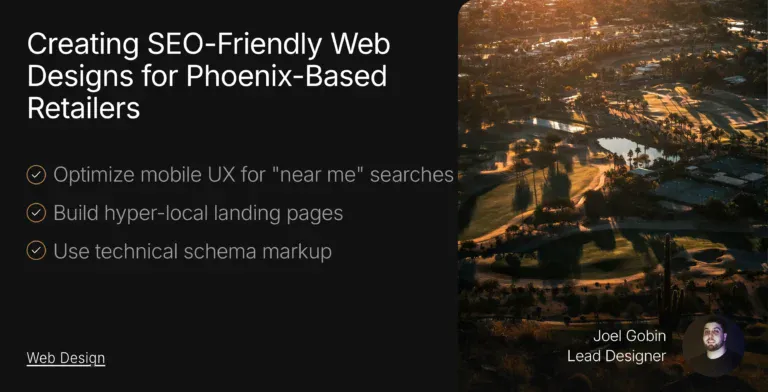 Web design and SEO are a core part of any website in 2025. SEO without good web design will bring in visitors who will leave as soon as they see how boring homepage is.
Web design and SEO are a core part of any website in 2025. SEO without good web design will bring in visitors who will leave as soon as they see how boring homepage is.
While a good web design with zero SEO work will bring in no organic traffic at all to your website.
You need both web design and SEO to work together if you want your website to prosper and grow organically.
The tricky part is striking a balance between web design and SEO without messing up your website.
Good SEO strategies will help your website grow organically and good web design will keep them coming back.
Below we’ll explain to you everything you need for both SEO and web design in 2025.
Do you want to build your first website but don’t know where to start? We can help.
Top 5 Things to Optimize For Web Design and SEO
When you Google “tips for web design and SEO,” you’ll be met with hundreds of different tips and “hacks” to make your website better.
The reality is that most don’t provide you with the most important ones to focus on. While trying to apply as many recommendations is great, going for the correct ones is vital. Optimizing your website for SEO is non-negotiable, and good web design helps achieve that.
We want to share all the best web design features and SEO tips we would recommend any business owner focus on first. No fluff or fake hacks.
Just simple, actionable tips you can use this week.
1. Improve Your Website’s Speed
Nothing stops a visitor from checking your website more than a slow-loading website.
In a world where our attention span continues to decline every year, it’s mandatory to make your website as snappy as possible.
Visitors don’t want to wait more than 3 seconds for a page to load.
In fact, if your website takes 3 seconds or more to load, your average bounce rate goes up by 32%. This is without taking into account any other factors that could make a visitor leave.
Google also uses load time as a ranking factor, so having a well-optimized website will get your website ranked higher.
But what makes websites take longer to load? There are a lot of different things to consider when talking about website performance, but the most important factors are these:
-
Not compressing images: The problem we see the most when checking websites with load time issues is that they don’t compress their images at all. While it might not seem like it would make a big difference, making sure all your images use a WebP format is a solid way to reduce load times.
-
Using a bad hosting service: When picking a hosting provider, make sure they are well-reviewed and offer a good service. Don’t try to cut costs when it comes to hosting. Make sure you get the best hosting service you can if you want to ensure that your website will load fast.
-
Overusing plugins: While it might be enticing to add dozens of plugins to your website, if overused, they can severely lengthen your website’s load times. Whenever you’re adding a plugin to your website, always double-check if it’s needed.
By adjusting these 3 factors, your website speed will be drastically reduced. But how do you know by how much?
Simple, the number one choice is Google PageSpeed Insights since it provides the best results and statistics of all the web load time tools.
Make sure your pages are well below 3 seconds of load time and you’ll be better than most websites out there with zero load time optimization.
2. Mobile-First Website
If your website is difficult to use on mobile devices, then you might as well be closing the door on more than 60% of potential visitors.
With that many people browsing the web on mobile devices every day, it’s easy to understand why having a mobile-friendly website is mandatory.
If your brand doesn’t have a website yet and you’re looking to get one done for the first time, we highly recommend using a mobile approach first.
This type of website creation focuses on making a website look good on mobile devices first. This ensures that your website will look great no matter what device it’s on.
When creating a mobile-first website, also consider how a user would interact with a website on a phone as opposed to a PC.
If you already own a website and you’re looking to add some mobile responsiveness to it, then make sure it suits both phones and tablets.
Your mobile website should have access to menus and important links in an easy-to-reach spot. Visitors shouldn’t have to do finger gymnastics just to open a menu or check their cart.
You want the website to be as easy to use as possible.
Pop-ups should also be smaller and easier to close on mobile. Most users don’t want to deal with pop-ups, especially the ones that are annoying to close.
As long as you don’t make your mobile website hard to use, you are infinitely better than brands without a mobile website at all.
Want to improve your existing website but don’t know where to begin? Let us help.
3. Readability
Readability is key for any website. No matter your brand size or industry, low readability drives visitors away.
For most people, a wall of text is daunting and can prevent them from exploring a website altogether, even if the product is exactly what they need.
There are several things that you can do to improve readability on every page of your website:
-
Proper use of white space: Ensuring that your written content has enough breaks between each sentence is crucial for readability. You want your written content to be inviting and easy to understand.
-
Content structure: Using headings and subheadings as beacons to certain important content is great for readability. This gives visitors who don’t want to read everything some sort of guidance as to where to look.
-
Font size: Finding the perfect size for your font is necessary for readability. If your font size is too small, then it’ll be a hassle to read your content. But if your font is too big, then it can hinder readability for mobile users.
-
Easy to understand language: When writing content, make sure to simplify the content as much as possible without sounding condescending. You want your content to be easy to read, but you don’t want to make your visitors feel like they’re reading a kindergarten book. When reviewing your written content, ask yourself, “Is there any way I could make this easier to understand?” If the answer is yes, then you can tweak the content a bit.
With all these strategies, you can increase the readability of your website in a matter of days.
These strategies are applicable to every single web page on your website and should be a part of your brand strategy.
4. Better Website Navigation
Website navigation is of utmost importance for both web design and SEO. How your website is structured can severely affect how both Google and visitors see your website.
If your home page is difficult to navigate or if it takes someone too long to find the page they’re looking for, then they’ll leave and find an alternative.
Your website shouldn’t be hard to use.
On the contrary, your website should be simple to use, and it should offer visitors different tools to make navigating through it quicker.
Not only is bad navigation horrible for visitors – it also affects your company’s marketing directly.
If your website is hard to navigate, then it’ll make the search engine’s job that much harder. Your website needs a clean structure for search engines to crawl through it effectively.
Here are some of the best ways you can improve your website’s navigation:
-
Add a search bar: Every website should have a search bar to find pages faster. A search bar effectively cuts a visitor’s time looking for a product in half. This helps convert visitors into customers by wasting as little of their time as possible.
-
Simplicity: Don’t overcomplicate your website. While parallax movement looks amazing, your end goal should be to help visitors find your products or services. Make sure you strike a balance between aesthetics and functionality.
-
Consistency: Making sure all your pages are easy to navigate is important. While your main page should be your main focus (no pun intended), it doesn’t mean you should neglect the other pages on your website.
With these changes, your web design and SEO will be miles better than anything you had before.
5. Proper Use of Metadata
Metadata, especially your web page’s meta descriptions and title tags, should never be neglected. They are the first point of contact with potential visitors on the search engine results page (SERP).
If they are boring or too basic, then people might decide to pick another website on the SERP.
You have to strike a balance between making your metadata enticing to click on while optimizing it for your main keyword.
Here are some of the best practices that you should consider when working on your metadata:
- Explain the page: Remember that potential visitors want to know what to expect from your page at a glance. Use your meta description to give them a quick explanation of what the page is all about.
- Add keywords: Make sure you add keywords related to the content on your page in both your meta title and meta description. Just double-check that you’re using the correct main keyword.
- Don’t overstuff keywords: While we highly recommend you add keywords to your meta title and meta description, you should never overdo it. Overstuffing keywords is never a good thing and will do more harm than good in the long run.
By ensuring these three practices are met in every single meta title and meta description, you will guarantee both good visibility and click-through rate.
Get a Website That Ranks & Converts with Blacksmith
Web design and SEO can be difficult to balance and make work properly. Especially when you’re trying to run your business.
But the reality is that you don’t have to do it by yourself.
Here at Blacksmith, we pride ourselves on helping out business owners who want to thrive and push their business to the next level.
With our expert web design services, you can focus on your business while our seasoned web designers make sure your website stands out and works flawlessly.
It has never been more important to have an exceptional website like in 2025. Let us create a custom website for you that you’ll be proud to show and share with anyone interested in your business and products.
Still unsure if this is the right decision for your business? Let’s schedule a call so we can show you how vital a good website is in 2025 and how it can skyrocket your growth.











